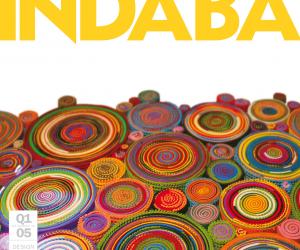First Published in

Alison Jackson's photographs humourously savage and lampoon English celebrities and political figures. A graduate of the Royal College of Art, Jackson first came to prominence in 1999 with a controversial picture of Princess Diana and Dodi Fayed sitting alongside their mixed-race child. Of course, nothing about the image was true; Jackson uses look-alikes and stages all her photographic scenarios.
In some ways it is incidental that Jackson is a photographer; her work is so quintessentially English, both in tone and heft, that it seems more important to identify her mode than her medium. Jackson is a satirist, her photographs redolent of the sardonic charms of British cartooning.
It is an insight underscored by the fact that her photographs appear weekly in The Guardian's Weekend magazine. The newsprint medium is a markedly appropriate forum for Jackson's photographs, which, like the cartoon, rely on the instantaneity of image recognition coupled with the delivery of a disparaging one-liner.
It is not just in cartooning that one can identify precedents. Jackson's wickedly derisive photographs share much in common with the character of Spitting Images, that outrageous 1980s television satire that used puppets to ridicule prominent public figures. But this is all simply context.
It is impossible to ignore the fact that Jackson works photographically, her pictures aping the attributes of modern paparazzi photographs. It is an apt choice, the paparazzi shot ranking as one of the most defiantly voyeuristic forms of contemporary photography. Not that Jackson is overly academic about her work, not always.
"My work is certainly about simulation and I have found (French philosopher) Jean Baudrillard's writings useful, especially his essay 'The Precession of Simulacra'," she once told John Walker, in an interview published in ArtReview (February 2001). In the same interview, Jackson also discussed the influences on her photography. Asked whether Cindy Sherman, Calum Colvin and the late Jo Spence, all practitioners of photographic simulation and stage play, had influenced her, Jackson offered a surprise response. "Actually, Warhol was more of an influence," she remarked. "His silkscreen paintings of celebrities impressed me because, besides being representations of the famous, they were also self-reflexive in the sense of being images about how fame is created by the mass media."
Intrigued by this admission, I decided to confront Jackson with a series of propositions culled from Warhol's book of droll aphorisms, otherwise known as From A to B and Back Again. It seemed like a fun way to negotiate the complexities of her subject matter, and also test Warhol's assertion that "almost all interviews are preordained".
'The people who have the best fame are those who have their name on stores.' Do you agree?
The people who have the most successful fame are the celebrities who are constantly in the press or on the TV. It is the repetition of their image that makes them famous. The more their 'face' gets published, the more they are known and stick in the public psyche.
'Being famous isn't all that important?' How have you personally dealt with fame/acclaim? Has it been difficult? Do you have to be more careful about how you conduct yourself?
I think people who are famous have a responsibility to the public, therefore it is important. I am not sure that celebrity worship that we see is important. The worship of celebrity is because of the seductive nature of photography, the identification with the celebrity, the repetition of imagery of the public's idols. Laziness of people to go and 'do it' for themselves. It's much easier to sit at home and live vicariously through the celebrity; watch someone else's life on TV including their successes than it is to go and do it for oneself. I am pleased my work, photographs and films get recognised; I intend them to be thought provoking rather than pieces that people walk past. I think my work is known rather than myself.
'A good reason to be famous, though, is so you can read all the big magazines and know everybody in all the stories.'
Would you consider yourself famous to the point that you know the people being profiled in the magazines?
I have met some celebrities, but I try and keep a low profile!
'I didn't expect the movies we were doing to be commercial.'
Were you, and possibly are you still, surprised at the success of your art, both commercially and critically?
I was very surprised when the paparazzi started to photograph my work and me. It was very sudden and unexpected. I work hard to try and make my pictures as successful as possible, so as many people as possible can see them.
'Some people say that you're only impressed with somebody famous if you've known about them since you were little or for a long time before you met them.' In a sense this tends to hold true of the celebrities in your book Private - they're all stalwarts of the celebrity circuit. What criteria do you use to select parody subjects? Are there celebrities you won't do? I try and pick celebrities that have a lot of myths surrounding them. These are the A list ones. There is more press about them and yet most of us don't actually know them, we only know them through the media. Often the smaller celebs are trying to make a name for themselves and sometimes do gratuitous things themselves. I am not particularly interested in making images that are more gratuitous than the celebs themselves.
'Models can sometimes be very rude.' Do you have very fleeting relationships with the models you work with or are they quite intense and prolonged. Obviously the models, or doubles, are aware that they are trading on their similar looks. Have you, however, ever had problems with models objecting to what you are doing in your work? I have been working with my models for six years, so we have built up a relationship. Yes, sometimes they do not want to do what I ask for. In this case I don't get the picture I want.
'I loved working when I worked at commercial art and they told you what to do and how to do it and all you had to do was correct it and they'd say yes or no. The hard thing is when you have to dream up tasteless things to do on your own.' Would you agree/disagree in light of the big commercial campaigns you've worked on, for example you adverts for Schweppes' drinks? Aside from the processes informing your work, which may be the same, do you draw a strict line between your commercial and artistic work? You cannot be transgressive in commercial art, but you can make a transgressive piece in the art world. To do this one needs to push the boundaries to the limit and this is unacceptable for the commercial world. My work is tougher in the art galleries.
'Working for a lot of money can throw your self-image off.'
Has commercial success made it harder or easier to do what you do?
I enjoy creating so the more I do, whether it is commercial or art, the more I do. They are different 'markets' if you like and as a TV director, for example, I have a responsibility to the public, including kids if it is pre watershed, when I put something on TV.
'I've found that almost all interviews are preordained.'
True, or not? Has it been difficult negotiating the press, particularly the art press?
It is always difficult and it is great that the press want to write about my pictures, it means more people get to see them and hear about them.




